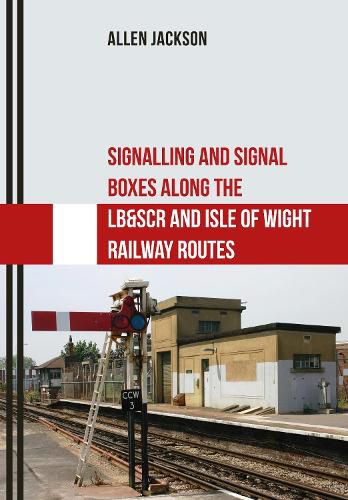Readings Newsletter
Become a Readings Member to make your shopping experience even easier.
Sign in or sign up for free!
You’re not far away from qualifying for FREE standard shipping within Australia
You’ve qualified for FREE standard shipping within Australia
The cart is loading…






The Prince Regent first popularised Brighton as a pleasure destination in the eighteenth century, and the town acquired a reputation for pleasure for the masses after the coming of the railway. From these beginnings the railway grew to cover large parts of Surrey and Sussex, and went some way to establishing the railway commuter. The bowler-hatted city gent on the 07.10 to Victoria became a national stereotype.
These intensively worked lines were early converts to electric traction in the 1920s and 1930s and, consequently, much of its mechanical signalling was removed then. However, some mechanical signalling remained in seaside resorts other than Brighton and on other routes not seen as a modernisation priority. Massive investment in recent years has rendered or will shortly render the remaining mechanical signalling and signal boxes redundant, but the LB&SCR will live on at the Bluebell heritage railway. The Isle of Wight railway continues in a proud independent tradition; much of it was concerned with providing a conveyor belt for holidaymakers off the ferries in the summer months.
Allen Jackson uses an array of photographs to illustrate lavishly the story of signalling in the principal constituents of the Southern Rail region - focusing here on the London, Brighton & South Coast Railway and Isle of Wight routes.
$9.00 standard shipping within Australia
FREE standard shipping within Australia for orders over $100.00
Express & International shipping calculated at checkout
The Prince Regent first popularised Brighton as a pleasure destination in the eighteenth century, and the town acquired a reputation for pleasure for the masses after the coming of the railway. From these beginnings the railway grew to cover large parts of Surrey and Sussex, and went some way to establishing the railway commuter. The bowler-hatted city gent on the 07.10 to Victoria became a national stereotype.
These intensively worked lines were early converts to electric traction in the 1920s and 1930s and, consequently, much of its mechanical signalling was removed then. However, some mechanical signalling remained in seaside resorts other than Brighton and on other routes not seen as a modernisation priority. Massive investment in recent years has rendered or will shortly render the remaining mechanical signalling and signal boxes redundant, but the LB&SCR will live on at the Bluebell heritage railway. The Isle of Wight railway continues in a proud independent tradition; much of it was concerned with providing a conveyor belt for holidaymakers off the ferries in the summer months.
Allen Jackson uses an array of photographs to illustrate lavishly the story of signalling in the principal constituents of the Southern Rail region - focusing here on the London, Brighton & South Coast Railway and Isle of Wight routes.